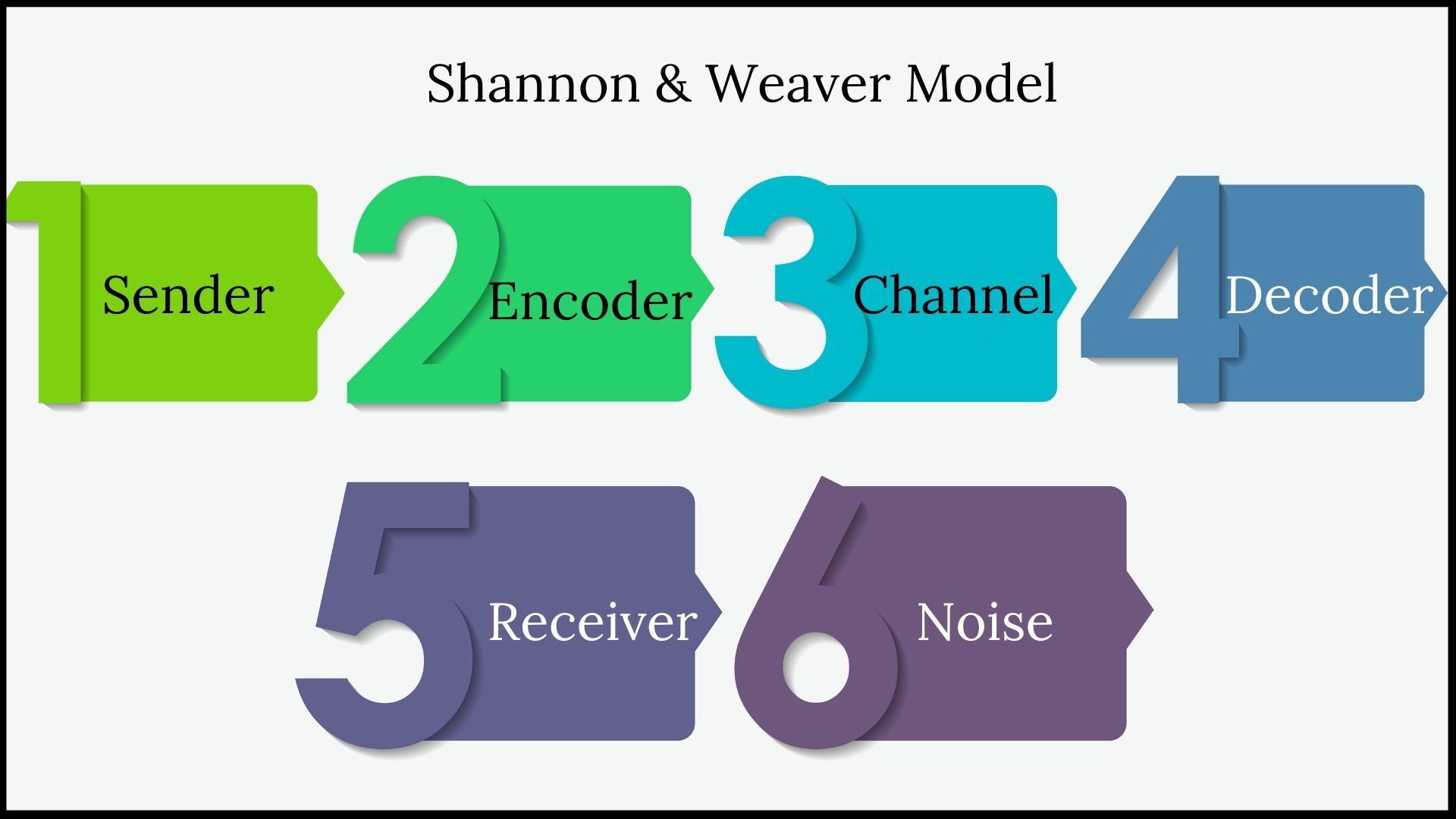
What Are the Different Types of Communication Models?

Shannon and Weaver's Model of Communication is a mathematical theory that identifies six key components: sender, encoder, channel, decoder, receiver, and noise While it has its advantages, it also has limitations
The communication model credited to Claude Elwood Shannon and Warren Weaver was first introduced in 1948 through their publication of Mathematical Theory of Communication. The following year, the duo co-authored a book that further expounded on the theory. Shannon, a mathematician and electronic engineer, collaborated with Weaver, a scientist, to develop this model of communication.
The purpose of developing this model was to enhance the exchange of information between the sender and the receiver. In contrast to Berlo's and Aristotle's communication models, Shannon and Weaver's model highlights the impact of noise on the communication process. It is worth mentioning that the noise factor was introduced later. Additionally, they incorporated the feedback mechanism from the receiver to the sender in their model.
The Shannon and Weaver communication model was discovered by Shannon and Weaver during their search for a more efficient and rapid means of transmitting information.
Development of the Model
The main goal was to discover a means of transforming communication into electrical signals, thereby streamlining the tasks of engineers who were handling telephone cables. A prime illustration of this is how downloaded data from the internet is measured in bits per second, utilizing mathematical models that were originally created by Shannon and Weaver.
Weaver's addition of a critical component transformed the linear model into a cylindrical one, which has since become widely applicable in various areas of communication. This model is often referred to as the mother of all communication models.
Components of Shannon and Weaver Model
There are six primary components of the Shannon and Weaver model:
1. Sender
The sender is the one from whom the message originates. The sender is the one who composes the message and sends it to the receiver.
The sender can be anyone responsible for originating the message like a person, a company, or a combination of both.
2. Encoder
The transmission of a message involves encoding, which can take the form of binary data, electrical impulses in videos, or sound waves in radio broadcasts. In essence, encoding refers to the method used to transmit the message.
3. Channel
The channel is used to convey the message from the sender to the receiver. For example, email can be a channel by which a message is communicated to the receiver.
A telephone call can also be considered as a channel by which a message is delivered from the sender.
4. Decoder
When it comes to data transmission, decoding serves as the counterpart to encoding. The process of decoding involves unpacking data that has been previously encoded in order to extract the original message. This can be seen in the example of an encoded email, which is decoded by the receiver's computer in order to reveal the contents of the message.
5. Receiver
The recipient of the message is known as the receiver.
The recipient of the communication stands at the opposite end of the channel, serving as the intended party for the sender's message. It is essential for the recipient to possess the necessary technology to comprehend the message, such as having a mobile device to read a text message.
The recipient must possess the appropriate resources and understanding to effectively receive the message. Without these, the communication will lack impact and the purpose of conveying ideas will be defeated.
6. Noise
High volumes of meaningless sounds can disrupt the communication process, and this is what we call noise. When noise is present, it can prevent the exchange of ideas between the sender and receiver, leading to lost communication. For marketers, it's crucial to consider the impact of noise before sending a message to customers as it can affect how the message is received.
The newspaper you're reading may have an advertisement for a new Rolex watch, which is a form of communication from the company promoting the product to the customer. However, your attention may be diverted by the COVID vaccine announcement printed next to the advertisement, instead of focusing on the advertisement itself.
In this instance, the news acted as a distraction, hindering effective communication. A crying baby in a movie theater is a similar example of a distraction that takes away from the experience of watching the movie. Feedback occurs when the receiver responds to the sender regarding the message received.
Advantages
Most of the elements of the modern communication models are considered in this model, including noise, which was missing in Berlo’s and Aristotle’s models of communication.
Shannon and Weaver gave the mathematical aspect which was missing in earlier models of communication.
Limitations
Although the concept of feedback exists in this model, very little importance is given to it.
The noise was a missing element in the model, which was added later.
Conclusion
The mathematical approach offered by Shannon and Weaver’s model provides valuable insights into the encoding and decoding of messages from the source, making it an essential tool for understanding communication models.
Although this model can be considered as the mother of all communication models since most of the modern-day models sprouted from this one, there are many more improvements that can be made.
NEXT
Transactional Model of Communication
PREV
Berlos Model of Communication
START
Communication Models








